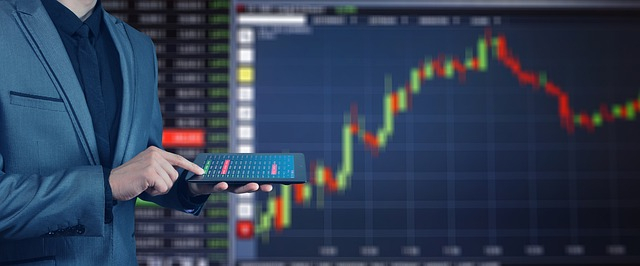
Economic growth across the South-East Asia (SEA) region is expected to moderate to 4.5% in 2019, from 5.1% in 2018, amid another round of tariffs and trade restrictions by the US and China, according to ICAEW's latest Economic Update: South-East Asia report. Accommodative macro policies, coupled with domestic-driven activities, are expected to cushion the weaker trade outlook, although this will vary across economies.
Overall economic growth across the region in H1 2019 slowed to 4% on the year compared to 4.5% in H2 2018. This is the result of spillovers from the US-China trade war, slower Chinese domestic demand and a downturn in the global electronics cycle.
Slower export momentum weighed heavily on the growth of trade dependent economies such as Singapore, Thailand and the Philippines. Meanwhile, Malaysia and Vietnam have outperformed the region, reflecting a more modest deceleration in export growth and resilient domestic demand.
Sian Fenner, ICAEW Economic Advisor and Oxford Economics Lead Asia Economist said, "Amid ongoing global headwinds and uncertainty around the outcome of US-China trade talks, we expect to see a further deterioration in economic prospects across the region, particularly amongst more trade dependent economies. Overall, regional South-East Asia GDP growth is expected to moderate to 4.5% this year, and stabilise at the same rate in 2020."
Domestic demand expected to receive boost from policy rate reductions
Against an increasingly challenging external backdrop, with lower US interest rates and subdued inflationary pressures, central banks across the region are expected to reduce policy rates to support domestic demand. Fiscal policy should also become more supportive amid higher infrastructure investment.
After lowering interest rates by 50 basis points (bp) a piece this year, the central banks of Indonesia and the Philippines are forecast to lower rates once more in Q4 2019. Likewise, Thailand and Malaysia are also expected to lower rates by at least 25bp by early 2020. In Singapore, the Monetary Authority of Singapore (MAS) is expected to ease policy in October, shifting to a zero appreciation bias in its key policy tool, SG$NEER, a trade weighted baskets of currencies against the SGD.
Looking ahead, Singapore is forecast to dip into a manufacturing-led technical recession[1] in Q3 2019. Vietnam is set to continue to outperform the rest of the region, albeit with a moderation in its GDP growth to 6.7% in 2019, followed by a further deceleration to 6.3% in 2020. If the US imposes higher import tariffs on Vietnam, GDP growth in the country is likely to be cut to 5.9% in 2020-21 compared to a baseline of 6.2%.
"We expect the challenging external conditions to continue weighing heavily on the overall growth across South-East Asia economies, as well as on regional trade flows. Although domestic-driven activities, aided by more accommodative macro policies, are likely to cushion the weaker trade outlook, growth is set to remain below potential in Indonesia, the Philippines and Thailand, with Singapore bracing for the hardest impact," said Mark Billington, ICAEW Regional Director, Greater China and South-East Asia.
Other findings in the report include:
- Vietnam set to outperform South-East Asia region with 2019 GDP growth forecast at 6.7%
The economy recorded a rise of 6.7% in Q2 2019, only slightly lower than the 6.8% recorded in Q1 2019. A 33% year-on-year increase in exports to the US in H1 2019, which helps to offset slower trade with China and other countries in the region, also allows Vietnam to outperform other economies in the region. Although the economy is expected to continue to benefit from positive trade diversion effects, trade momentum will continue to trend lower given weaker Chinese import demand and increased trade protectionism generally.
Domestic demand is expected to remain healthy in 2019-2020. Household spending is expected to remain solid amid stable inflation and rising incomes, while sustained tourism should support the service sector. Meanwhile, although new registered foreign direct investment (FDI) dipped slightly last year, medium-term prospects for FDI flows remain bright, with solid FDI inflows expected to continue supporting investment. As a result, the State Bank of Vietnam (SBV) is expected to keep its refinancing rate unchanged at 6.25% over the next year.
Overall, Vietnam's GDP is forecast to grow by 6.7% this year, with a modest deceleration to 6.3% in 2020 and then about 6% per annum in 2021−22.
- Myanmar's GDP to grow by 6.4% in 2018-19, buoyed by foreign investment in key sectors
Myanmar's economy is forecast to expand to 6.4% in 2018-19, before picking up to 6.8% in 2019-20, as the market opens up to foreign investment, with infrastructure, manufacturing and wholesale and retail services expected to be the greatest beneficiaries. Indeed, after a 14% drop in FDI to $5.7bn in 2017-18, FDI inflows are improving.
According to the Myanmar Investment Commission, FDI inflows rose to over US$3.5bn over the 10 months to August 2019, with a sharp rise in investment channelled into the transportation and communication sector and the manufacturing sector. This should lead to a rise in manufacturing activity and, as production comes online, support exports over 2019-20 despite the backdrop of weaker Chinese import demand.
However, escalating US-China trade tensions and the ongoing humanitarian crisis in the Rakhine state and slow progress in the repatriation of refugees is a key risk to the economy. Looking further ahead, given its relatively low wage workforce, Myanmar is set to benefit from strengthening FDI inflows as global supply chains adjust to higher costs in China. Nonetheless, structural reforms are needed to improve firms' ability to do business in the country








